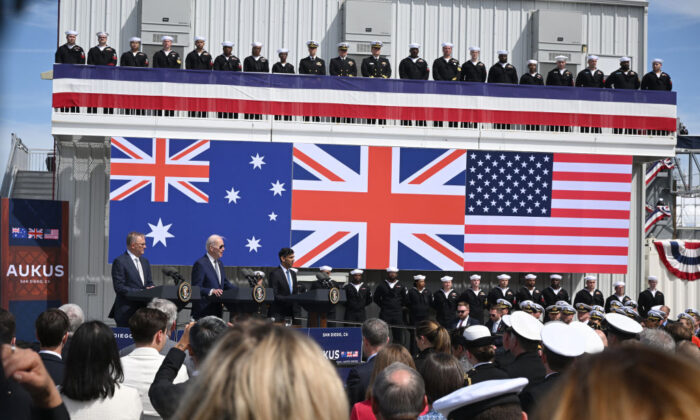The Australia Institute has raised concerns about the lack of planning for AUKUS, calling it ‘deeply worrying.’ Specifically, the think tank criticized the nuclear-propelled submarine project under AUKUS as ‘overly ambitious’ and potentially weakening Australia’s ability to address security threats beyond armed conflict, such as pandemics. The Institute outlined various issues with the AUKUS pact in a submission to the Senate Committee reviewing the treaty, highlighting a lack of analysis and evidence supporting the agreement. One major aspect of AUKUS is the decision to equip the Royal Australian Navy with nuclear-powered submarines, a move aimed at countering Beijing’s maritime aggression in the Indo-Pacific. However, the Institute cautioned that the estimated cost of AUKUS, at $368 billion, was unsubstantiated and could be significantly higher based on past experiences. The group described AUKUS as an overly ambitious approach that could distort Australia’s defense needs, weaken its overall posture, and have long-term impacts on the country’s well-being. Additionally, the Institute questioned the feasibility of producing the submarines and criticized the implementation approach as inadequate. The submission also raised concerns about the lack of planning for storing and disposing of nuclear materials used in the submarines’ engines, highlighting the complexity and skills needed for military reactor operation and management. The Institute urged the Committee to address these issues and recommended renegotiating the agreement to protect Australia’s decision-making and sovereignty.
Instead of operating Virginia-class submarines, the report suggests a U.S.-Australia military division of labor where U.S. vessels would be based out of Australia. The report proposes that U.S. SSNs could perform both U.S. and Australian SSN missions, while Australia focuses on investing in military capabilities for non-SSN missions for both countries.
Instead of Australia investing in its own SSNs, the report recommends that they allocate funds towards other military capabilities like long-range anti-ship missiles, drones, loitering munitions, B-21 long-range bombers, or other long-range strike aircraft.





